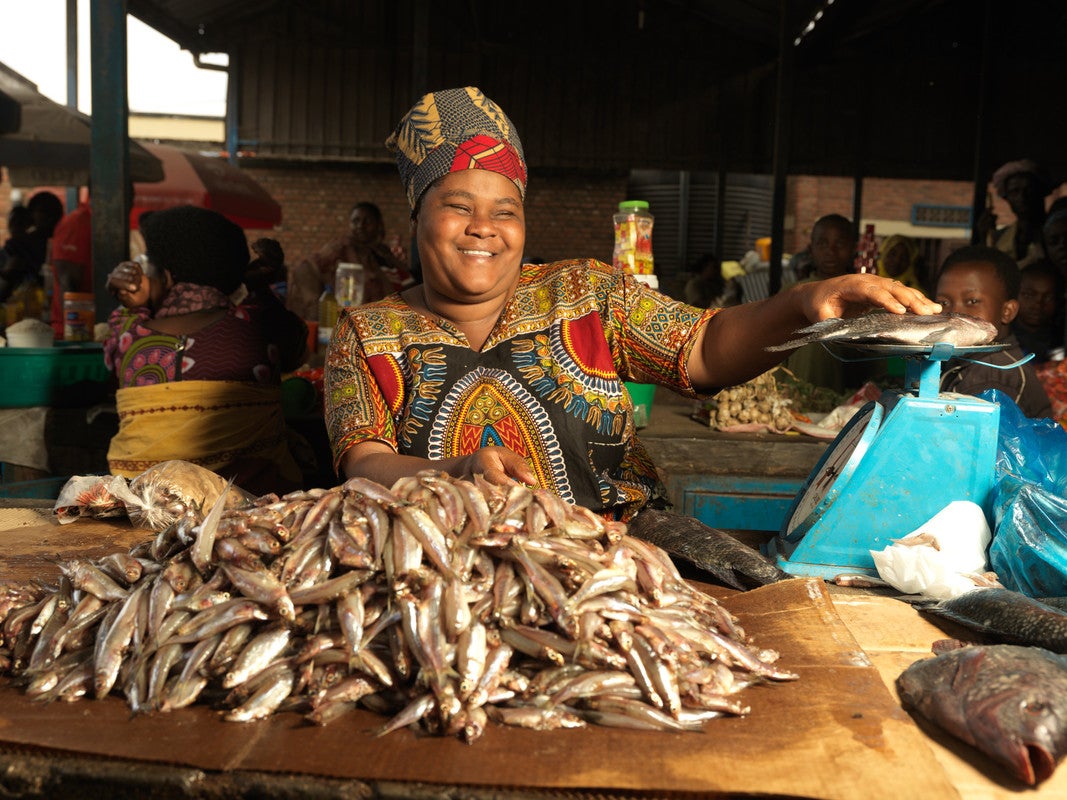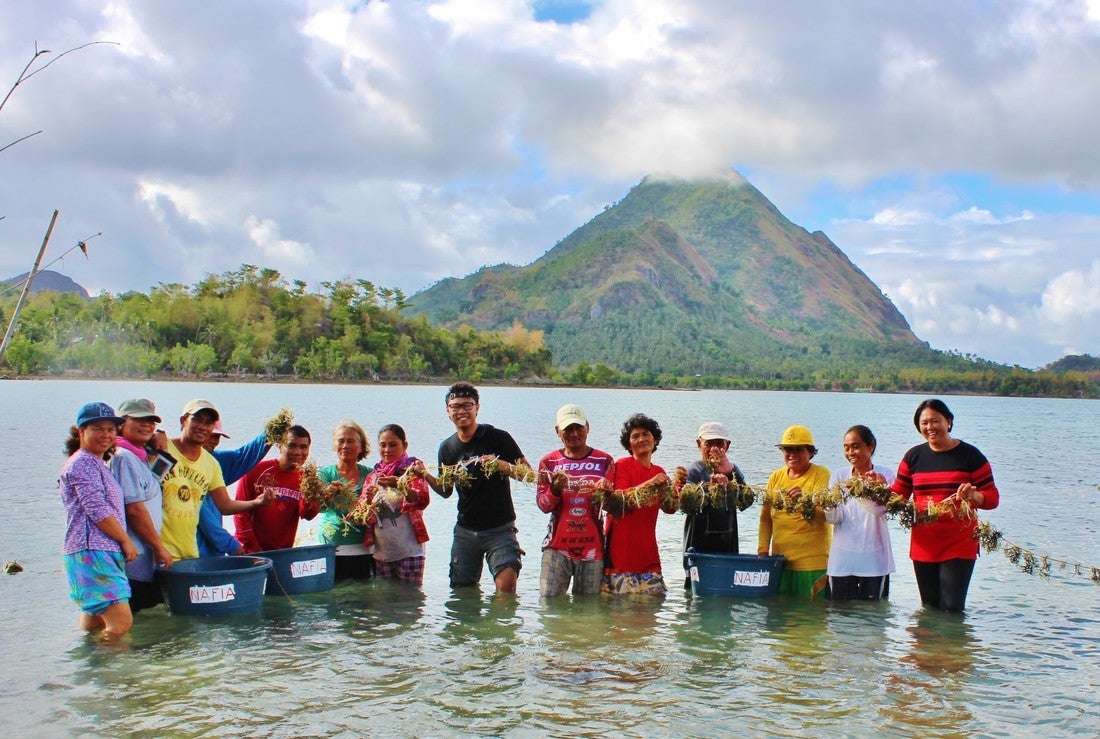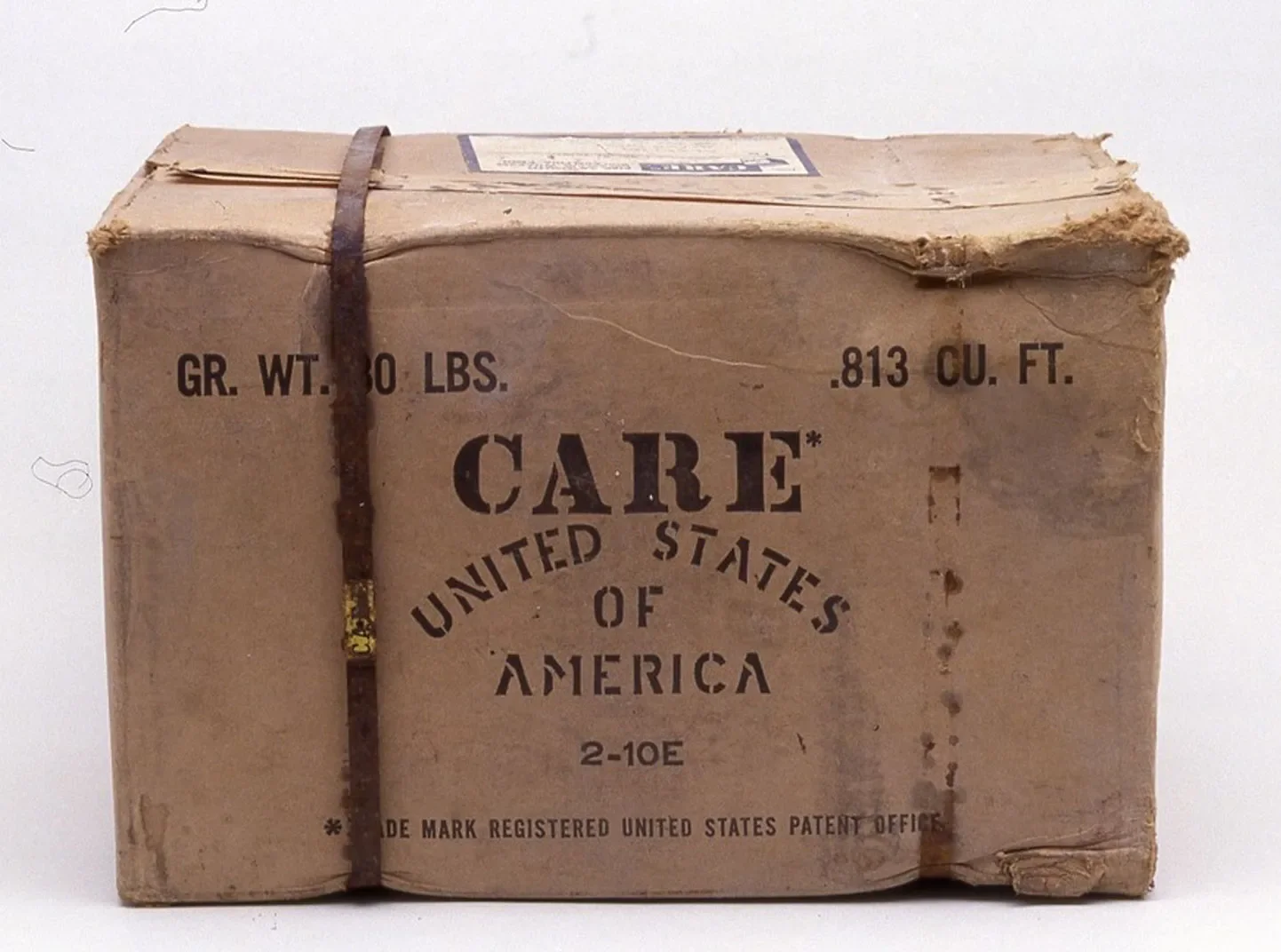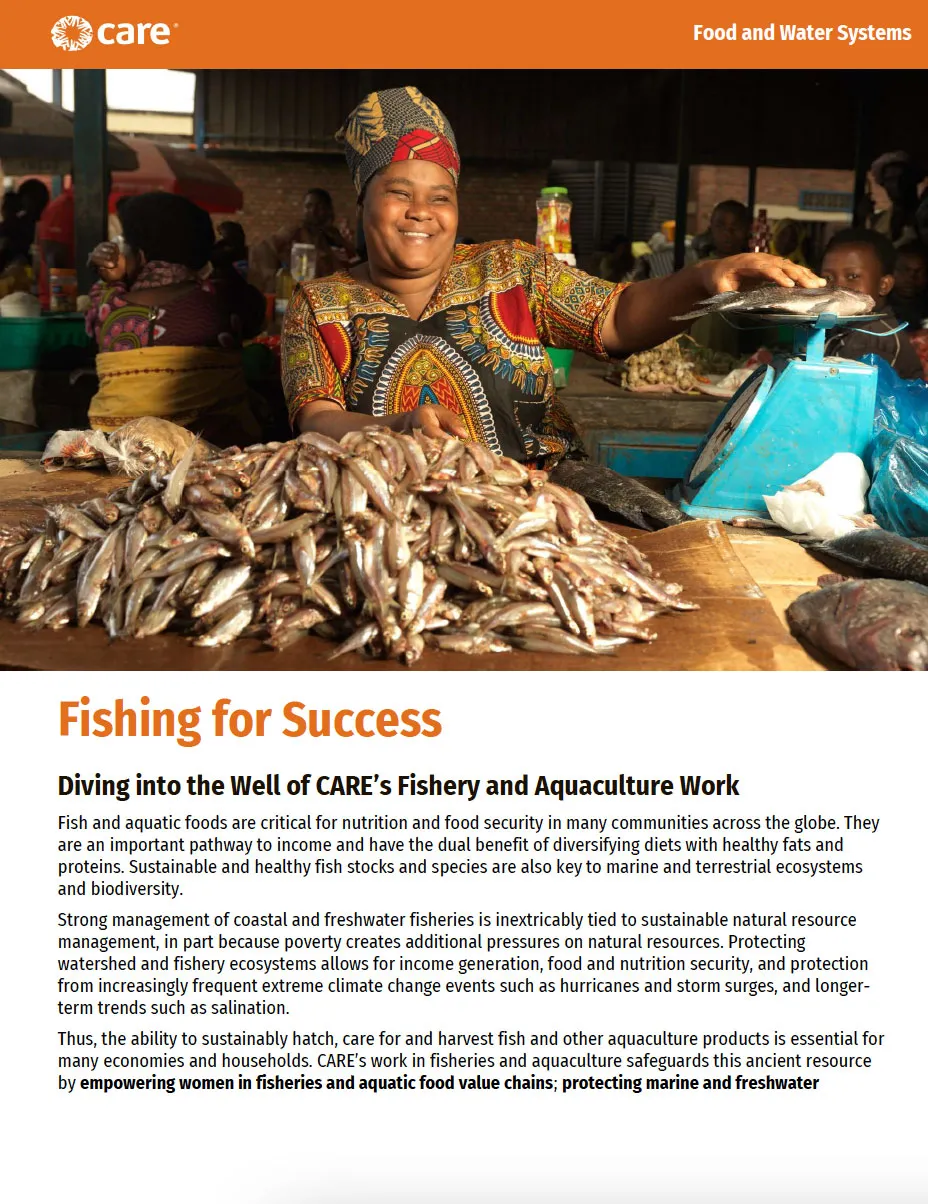Introduction
Fish and aquatic foods are critical for nutrition and food security in many communities across the globe. They are an important pathway to income and have the dual benefit of diversifying diets with healthy fats and proteins. Sustainable and healthy fish stocks and species are also key to marine and terrestrial ecosystems and biodiversity.
Strong management of coastal and freshwater fisheries is inextricably tied to sustainable natural resource management, in part because poverty creates additional pressures on natural resources. Protecting watershed and fishery ecosystems allows for income generation, food and nutrition security, and protection from increasingly frequent extreme climate change events such as hurricanes and storm surges, and longer-term trends such as salination.
Thus, the ability to sustainably hatch, care for and harvest fish and other aquaculture products is essential for many economies and households. CARE’s work in fisheries and aquaculture safeguards this ancient resource by empowering women in fisheries and aquatic food value chains; protecting marine and freshwater ecosystems through environmental, climate change and disaster risk management programs; and using fish for maternal and child nutrition. To do this, CARE works with local communities, governments and partners to protect fisheries and employs programs to reduce hunger, improve nutrition, and conserve ecosystems. This document highlights some of CARE’s work to support women and men in fishing for success.
Partners for Protection in Mozambique
The CARE-WWF Alliance worked in the Primeiras e Segundas archipelago in Mozambique to address overfishing and the historical lack of legal authority of coastal citizens to manage areas for fish stock regeneration. Through joint advocacy, the Alliance contributed to the Government of Mozambique’s decision to designate a new protected area in 2012. The Primeiras e Segundas Environmental Protection Area is the first nature reserve in Mozambique that recognizes the rights of communities to manage and use natural resources and to permit local use and to formalize co-management with communities. The enabling policy framework, and empowering community-based Natural Resource Management Committees and Community Fishing Councils to participate in management, have been instrumental to build capacity and elevate community voices to higher levels of dialogue and decision-making. CARE’s engagement in advocacy with government ministries and legitimization of the message that poverty alleviation is linked to environmental protection was critical to buy-in on this novel approach. In 2015, the CARE-WWF Alliance supported the creation of the Union of Artisanal Fishers, which enables them to speak with one voice and directly communicate with representatives of the Ministry of Sea, Internal Waters and Fish. Collaborative research with CARE Mozambique, WWF, and the Ministry shows that after three years the diversity of fish species at least tripled, numbers of fish also increased. Conservation interventions – no take zones, community mangrove and community forest management – were associated with a 25% increase in dietary diversity between 2008 and 2014.
In some areas of Mozambique, over half of households fish three times per week, with women gathering shellfish in the mangroves and intertidal zones, while men catch fish. The men mostly use the hook and line method due to the high costs of fishing nets. CARE and WWF helped establish fish sanctuaries to provide more fish to these communities. 88% of community households said that the fish sanctuaries increased the size and number of fish in the spill-over zones, but that it also doubled the species of fish in four years. 70% of families also reported that they ate more fish, especially when other foods were unavailable or out of season. 75% of survey respondents said they wanted more sanctuaries to benefit more people, and 40 community based Natural Resource Management Committees were formed to focus on establishing more sanctuaries.
Swimming towards Gender-Equitable Aquaculture Market Systems in Egypt

CARE Egypt’s STREAMS project worked to increase production of inexpensive, nutritious and safe fish from sustainable aquaculture systems to help improve health and nutrition while creating employment and increasing incomes along the aquaculture value chain. To achieve this, STREAMS connected women retailers to savings groups so they could obtain loans to improve equipment and invest in new tools and technology, such as wet suits. The program also used resource-saving technology to reduce water use by 37% while increasing net profits by 56% for big farms. CARE Egypt worked with the government to understand key priorities, available investments, and ways to connect farmers and retailers with government support and policies. CARE Egypt also worked with local producer organizations and the Cooperative Union of Egyptian Water Resources to organize support and training, as well as connect them to market opportunities.
“Today we are working hand in hand, buying in bulk, negotiating prices together, and sharing the risk that each of us faces every day in the market.”
—Sabah, retailer
Also in Egypt, CARE partnered with WorldFish to improve the aquaculture value chain. Reports founds that for every $1 that was invested in the program, there was a return of $5.68. Reports also found that women working within the project were making $10 as compared to non-participant counterparts who made $1 on average. There was also a significant increase in the number of women elected to the Fisherman’s Union after the implementation of the project, not to mention an increased annual production of $2 million per year and an addition of 10,000 jobs to the economy. The program used gender sensitive programming, and at the end of the program 49% more women said they believe that both men and women should have equal say in decisions and approximately 80% said that women are able to be leaders.
Sustainable Seaweed in the Philippines

CARE has been working for ten years with Assistance and Cooperation for Resilience and Development as part of Partners for Resilience in the Philippines to support community resilience in the Manatuti river basin by diversifying livelihoods, strengthening capacities to withstand and adapt to the effects of climate change, and creating spaces for civil society participation in decision-making.
The Typhoon Haiyan Reconstruction Assistance project in the Philippines program focused on rebuilding equitable livelihoods. As part of this, they focused on the seaweed value chain given its high potential to provide supplemental income to women. They helped participants obtain permits for use of municipal waters, connected participants to production loans and insurance providers, and focused on women using CARE’s gender equality framework. CARE Philippines trained Seaweed Farmers’ Associations in seaweed growing, harvesting, disease prevention, and processing for market consumption. They also introduced abalone growing as an alternative product during the seaweed off-season when areas are affected by strong waves.
Partners for Resilience in the Philippines provided processing equipment and encouraged women’s collectives to expand and acquire more production assets, made possible through the establishment of relations with industry buyers to sustain market demand. To sustain the environment, program participants were trained in coastal resource management.
Managing Mangroves in Vietnam
CARE has been Building Coastal Resilience in Vietnam to counteract the degradation of coastal ecosystems (particularly mangrove forests) which has exposed residents, their homes, and productive assets to the impacts of storms and tidal floods. To help rural coastal communities sustainably manage natural resources, support livelihoods, and respond to climate change CARE Vietnam established Community-Based Mangrove Management Boards. These boards steered the process of planning and decision-making, planting and maintenance, and protection of young mangrove forests.1
CARE in Vietnam also built capacities for disaster risk reduction, coordinated efforts with officials on disaster preparedness plans, promoted livelihood models that are resilient to climate change; and engaged youth in coastal protection Green Teams. The Green Teams supported mangrove management, climate resilient livelihoods, and disaster risk preparedness planning. They worked closely with mangrove protection groups to educate and mobile residents on the value of mangrove forests, regulations, and approved harvesting timing and techniques.
Protein for People in Benin
CARE Benin used vouchers for fish, supplies, and fish feed in fish farming Village Savings and Loan Associations. 32 VSLAs received fingerlings and training on fish tank construction, fish feed for the first two fish production cycles, scales to weigh fish, water pumps and fish nets. To bolster the sustainability of the project, the activity required group members to make token payments for fish they received for their households. The earnings were reinvested in fingerlings for the next round (3 – 4 months per round) of fish farming. As a result, all of the VSLAs started second, third, and additional rounds of fish farming. Groups are privately purchasing catfish and tilapia fingerlings, and by the second round of production, the VSLA groups purchased 13,900 catfish fingerlings and 1,600 tilapia fingerlings without any external financial support.
Inspired by what they observed and learned from program participants, non-participating VSLA groups and community members started fish production and received technical assistance from program participants, who are well regarded by their peers as community resource persons. This unplanned scale-up of the intervention contributed to the program’s overall goal of increasing dietary diversity and promoting animal source foods in the diets of people living in these communities. The program also taught participants to make fish feed, and taught some VSLA members how to sell fish feed for additional income. There has been strong demand in the communities for fish due to increased availability and a growing knowledge of fish recipes as promoted through cooking demonstrations.
CARE Benin has also worked to preserve coastal wetlands and mitigate storm surges through community efforts to restore mangroves. To combat high iron deficiency anemia in children and women of reproductive age, CARE Benin worked with Lucky Iron Fish to train communities on iron deficiency and to distribute Lucky Iron Fish to program participants.
Financing Fish in Bangladesh
Through the efforts of CARE Bangladesh’s Krishi Utsho micro-franchise program, program participants increased income by an average of 102%. 98% of participants said they consume fish weekly, helping to diversify diets. The program supplemented fish cultivation by suppling fish feed, leading to a 90% satisfaction rate among people within the respondent group.
Gone Fishin’ in Ghana
CARE Ghana’s Far Ban Bo project worked through partners to strengthen civil society for sustainable fisheries management. The project was designed to address overfishing and unsustainable fishing practices. Far Ban Bo allied fishers in Fishery Associations to take part in governance of fisheries, and to pilot more effective monitoring and grievance mechanisms for illegal, unreported, and unregulated fishing.
Fishing for Friends in Malawi
CARE Malawi’s Integrated Food Security Response Initiative worked in close partnership with the National Aquaculture Center, the Fisheries Department, the Foundation for Irrigation and Sustainable Development and district assemblies to expand fish farming and small-scale integrated irrigation. The initiative provided income for rural families while helping to close the animal source food gap in the region.
Hatching in Honduras
CARE Honduras, with funding form Cargill, built eight tilapia aquaculture ponds to provide 22,000 fish for 2 communities in Villanueva. Women, teachers, and families were taught about the maintenance of the ponds and best ways to harvest the fish. The women gained income from tilapia, and fish consumption went up by 15% among children 15 years and younger.
Rising Resilience in Laos
CARE Laos partnered with local NGOs and authorities to implement the Northern Uplands – Promoting Climate Resilience program with funding from the European Union. A key function of this program was to address the lack of food diversity partially through the implementation of fishponds and teaching hatching and harvesting techniques. The efforts of this program resulted in 88,920 fingerlings benefitting 526 households.
The Big Surf: Advancing Gender Equality in Coral Reef-Dependent Communities
Coral reef degradation is an impending crisis for the millions of people who depend on reefs for their livelihoods, and wellbeing (Teh et al. 2013). But the world is at risk of losing between 70%-90% of its tropical coral reefs by the end of the century (IPCC 2018).
Navigating this ecological change will require responses at global, national and local levels, including environmental management, biodiversity conservation, and approaches to bolstering livelihoods in coral reef nations and communities. All these responses have the potential to reinforce accommodate or transform gender equality. Thus, CARE joined the WWF-led Coral Reef Initiative to support women and men in coral reef areas to protect and regenerate the world’s rapidly degenerating coral reefs for the benefit of people through nature-based solutions. The partnership comprises leading scientists and NGOs, working in collaboration with governments and communities to safeguard reefs, food security, and livelihoods against climate change.
Navigating New Waters
CARE’s fisheries and aquaculture portfolio is poised for growth, and projects are spread across food and nutrition security, resilience and livelihoods programs. Our work is nested in the She Feeds the World framework and pays particular attention to gender equality and the empowerment of women in fish value chains. Environmental and climate change resilience and disaster risk management also underpin much of CARE’s fisheries work – both marine and freshwater ecosystems. Given the importance of fish to maternal and child nutrition and wider food security in many resource poor and vulnerable communities, CARE will continue to grow our knowledge base and programming in this area. Relationships with community groups, local government and scientific and program partners (such as WorldFish or WWF) will remain critical in this process. Finally, we will advance our knowledge and learning on the importance of gender equality and social inclusion in coastal ecosystems and fisheries and aquaculture as we seek to scale out successful models in new areas.

